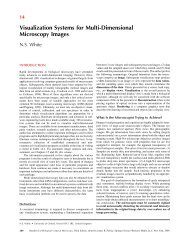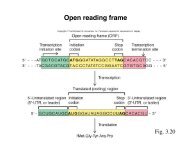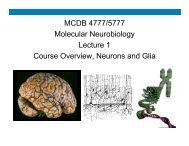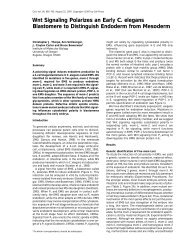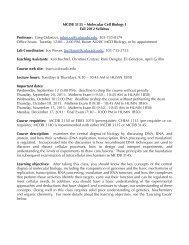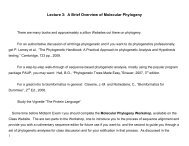2012 Program Booklet - MCD Biology - University of Colorado Boulder
2012 Program Booklet - MCD Biology - University of Colorado Boulder
2012 Program Booklet - MCD Biology - University of Colorado Boulder
You also want an ePaper? Increase the reach of your titles
YUMPU automatically turns print PDFs into web optimized ePapers that Google loves.
William Sullivan, PhD<br />
Pr<strong>of</strong>essor, Department <strong>of</strong> Molecular, Cell &<br />
Developmental <strong>Biology</strong><br />
<strong>University</strong> <strong>of</strong> California, Santa Cruz (UCSC)<br />
Title: Wolbachia, African River Blindness, and<br />
Big Sur<br />
Saturday, October 13<br />
4:45 – 5:30 pm<br />
JSCBB Butcher Auditorium<br />
Abstract:<br />
Wolbachia are obligate, intracellular, bacterial endosymbionts present in over 60% <strong>of</strong> all insect<br />
species. Manipulation <strong>of</strong> host reproduction and efficient maternal transmission have<br />
facilitated the global spread <strong>of</strong> Wolbachia in arthropods. Wolbachia are also present in filarial<br />
nematodes and are the leading cause <strong>of</strong> River Blindness and Elephantiasis. Our lab has<br />
focussed on the molecular and cellular interactions that mediate Wolbachia replication and<br />
transmission through insect and nematode germlines. Our studies demonstrate that efficient<br />
germline transmission <strong>of</strong> Wolbachia requires a developmentally coordinated association with<br />
plus and minus end motor proteins followed by a stable association in conserved germline<br />
determinants. In addition, Wolbachia manipulates host chromatin remodelers and the cell<br />
cycle to its advantage. Surveys <strong>of</strong> wild Drosophila populations reveals Wolbachia also stably<br />
populates host somatic lineages including the adult brain. Consequently we were able to<br />
generate stably Wolbachiainfected Drosophila cell lines. This facilitated high-‐throughput cell-‐<br />
based screens for small molecule compounds that specifically target Wolbachia. We descrbe<br />
the identification <strong>of</strong> Albendazole sulfone, an FDA approved metabolite <strong>of</strong> Albendazole, that<br />
specifically disrupts Wolbachia replication in Brugia malayi, the nematode associated with<br />
Elephantiasis and<br />
River Blindness.




